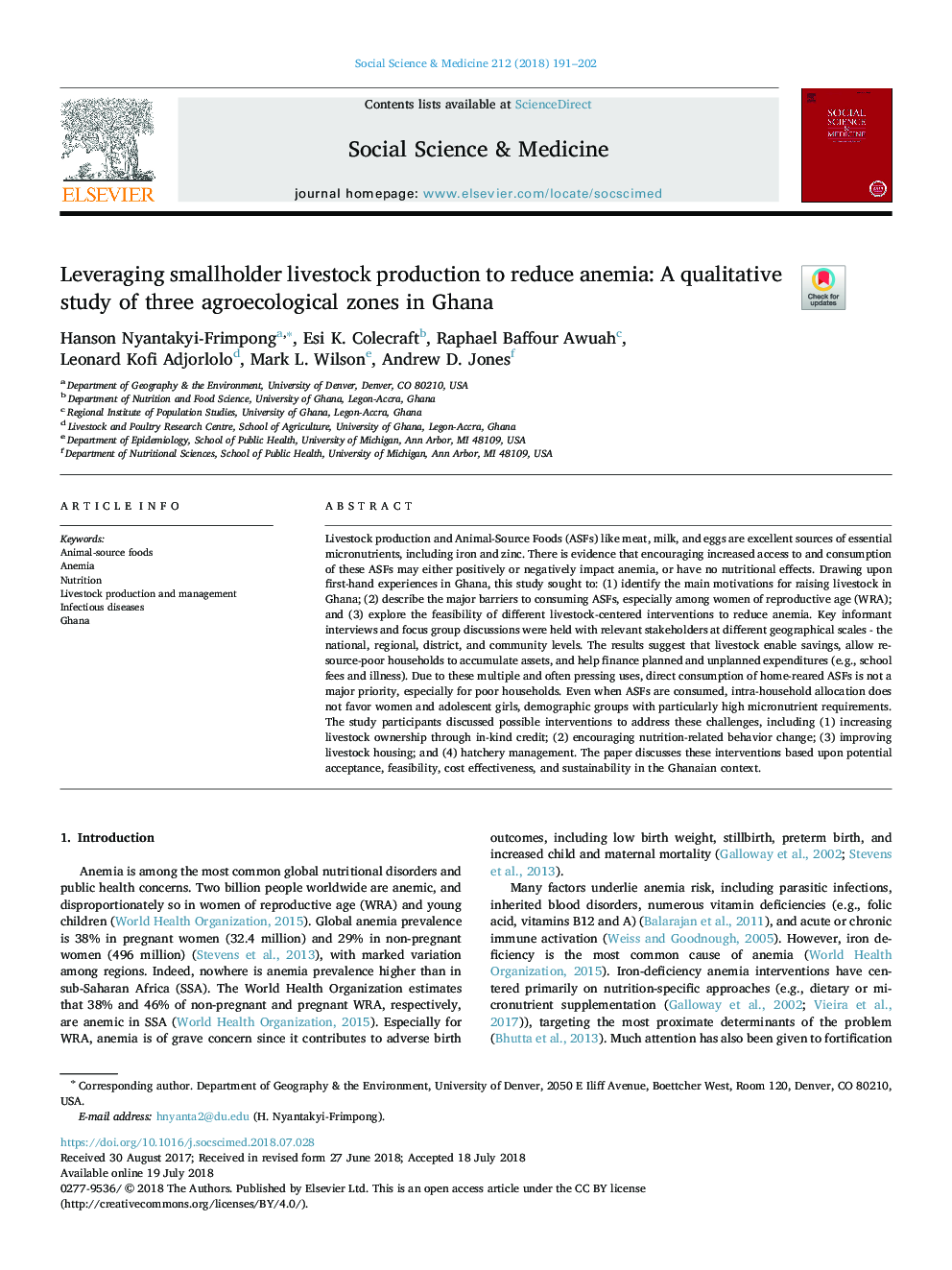| Article ID | Journal | Published Year | Pages | File Type |
|---|---|---|---|---|
| 7327333 | Social Science & Medicine | 2018 | 12 Pages |
Abstract
Livestock production and Animal-Source Foods (ASFs) like meat, milk, and eggs are excellent sources of essential micronutrients, including iron and zinc. There is evidence that encouraging increased access to and consumption of these ASFs may either positively or negatively impact anemia, or have no nutritional effects. Drawing upon first-hand experiences in Ghana, this study sought to: (1) identify the main motivations for raising livestock in Ghana; (2) describe the major barriers to consuming ASFs, especially among women of reproductive age (WRA); and (3) explore the feasibility of different livestock-centered interventions to reduce anemia. Key informant interviews and focus group discussions were held with relevant stakeholders at different geographical scales - the national, regional, district, and community levels. The results suggest that livestock enable savings, allow resource-poor households to accumulate assets, and help finance planned and unplanned expenditures (e.g., school fees and illness). Due to these multiple and often pressing uses, direct consumption of home-reared ASFs is not a major priority, especially for poor households. Even when ASFs are consumed, intra-household allocation does not favor women and adolescent girls, demographic groups with particularly high micronutrient requirements. The study participants discussed possible interventions to address these challenges, including (1) increasing livestock ownership through in-kind credit; (2) encouraging nutrition-related behavior change; (3) improving livestock housing; and (4) hatchery management. The paper discusses these interventions based upon potential acceptance, feasibility, cost effectiveness, and sustainability in the Ghanaian context.
Related Topics
Health Sciences
Medicine and Dentistry
Public Health and Health Policy
Authors
Hanson Nyantakyi-Frimpong, Esi K. Colecraft, Raphael Baffour Awuah, Leonard Kofi Adjorlolo, Mark L. Wilson, Andrew D. Jones,
